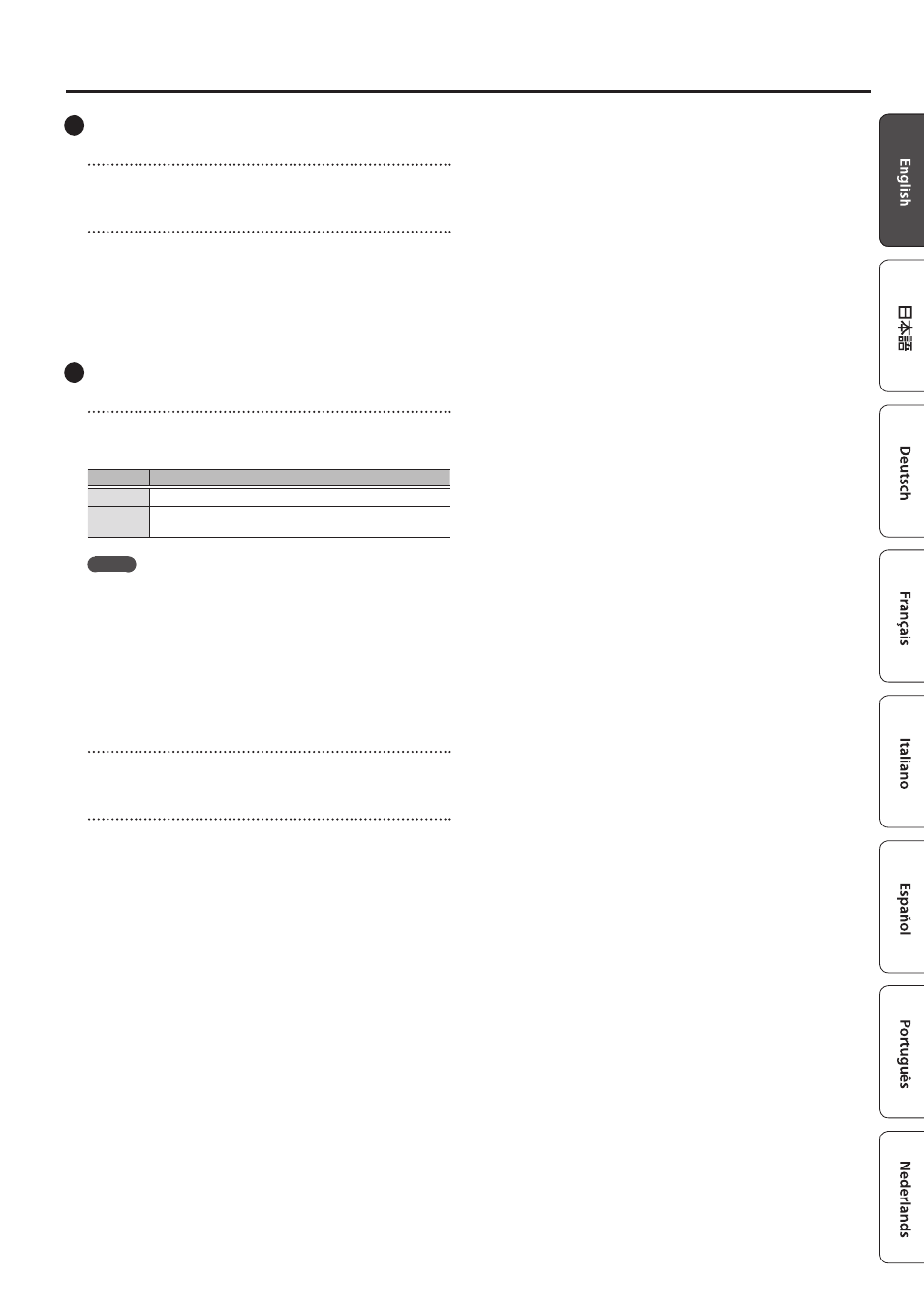O the mic/line input (p. 7), Panel descriptions – Roland RD-88 Digital Stage Piano User Manual
Page 7

7
Panel Descriptions
7
MIDI OUT connector
Transmits MIDI messages to an external MIDI device connected
here.
PEDAL jacks (DAMPER/R, FC2/C, FC1/L)
Connecting the pedal switch provided with the RD-88 to the
DAMPER jack allows you to use the switch as a damper pedal.
With a pedal connected to the FC1 or FC2 jack, you can then
assign a variety of functions to the pedal (p. 20).
* Use only the specified expression pedal. By connecting any other
expression pedals, you risk causing malfunction and/or damage
to the unit.
8
INPUT jacks (MIC, LINE)
You can connect a mic or external audio device, and use the mic
to sing while you perform, or perform along with a song that plays
back from your external audio device
Jack
Explanation
MIC
Connect a mic (sold separately) to this jack.
LINE
This is an audio input jack. You can connect your audio player or
other audio source here.
MEMO
5
Use the [MIC/LINE IN] knob to adjust the volume.
5
The RD-88 supports dynamic mics. Condenser mics are not
supported.
5
You can apply EQ and reverb to the input audio. Press the [MIC/
LINE IN SETTING] button to access the setting screen. You can
also access the same screen via [MENU]
0
[INPUT SETTING]. For
details on the parameters that can be set, refer to “Parameter
Guide” (PDF).
OUTPUT jacks (L/MONO, R)
These are connected to an amp or other device. For mono output,
use the L/MONO jack.
PHONES jack
You can connect a set of headphones here.
